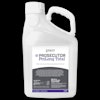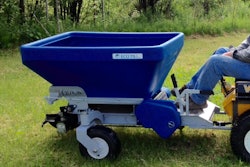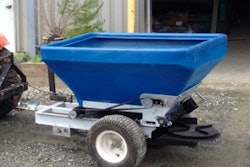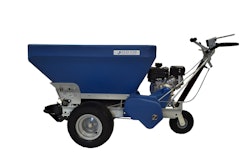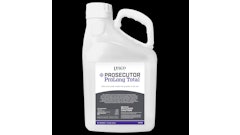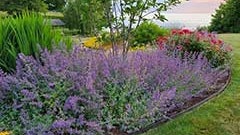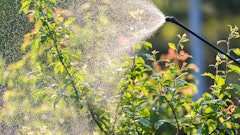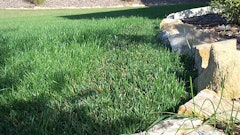
A well-manicured lawn—an easy and practical way to greet and set a tone for visitors—is a point of pride for many home and business owners. Nothing less than an immaculate first impression is acceptable. Any rogue leaves, thatch, branches, weeds or blemishes are intruders that must be rooted out by any means necessary, whether it be in the form of leaf removal, fertilizer and pesticide applications, mowing, irrigation, etc.
One drawback of customers springing for these landscaping services over the years, however, is the unintentional depletion of organic matter in their soil. Fortunately for landscape contractors, compost can help rebuild organic matter as it includes macro and micro nutrients, fungi and bacteria. Landscape contractors need only add compost top-dressing to their landscaping specialties to help rehabilitate overtreated turf. Plus, keeping soil healthy and fertile is just good business if you want to keep your customers happy. Healthy soil helps propagate a healthy lawn.
According to Daniel Cote, president and founder of Ecolawn Applicator, “A blade of grass has a short lifespan—only about six weeks—and must continually produce new tillers or the lawn thins out. A healthy lawn needs to produce new tillers faster than the older grass blades die off. Young grass produces tillers faster than older grass, so one of the most important secrets to maintaining a healthy, thick lawn is to keep your grass young.
“Naturally, a lawn is only as young as the soil it is rooted in. Top-dressing with new compost just once or twice a year is like adding youth directly to the soil. It invigorates the lawn, helping it to stay youthful and productive. A rich soil, appropriate conditions and the right plants are the basis of sound agronomics.”
To keep your customers’ turf forever young and set up a successful compost top-dressing application, Cote suggests that you first mow the grass to around 2 inches tall, which is an ideal height for top-dressing. Then assess whether core aeration or over-seeding is needed before you proceed to filling up a spreader with your compost or compost blend to be spread onto the turf. For the best results, only use compost
blends that combine soil, sand and compost, with a higher content of compost than any other materials. Starting at the farthest stretch of lawn, propel the spreader and material forth in a consistent pattern until the entire lawn is amended. Then water the turf for the next two days to speed up activation.
While you can top-dress a lawn at any time of year, Cote advises applying compost during the growing season and avoiding heat waves. Moreover, compost top-dressing should be done at least once a year, but more than once a year if the turf in question is heavily used or the turf’s soil appears otherwise unhealthy.
Cote’s History with Compost
Cote first became enamored with compost in the mid-‘90s after purchasing some property. He wanted to improve the property’s curb appeal and value by enhancing its landscaping. One obstacle he faced, though, was a bylaw prohibiting the use of chemical fertilizers. A neighbor recommended he try to use compost instead, so when it came time, Cote aerated and reseeded the soil, then spread a full trailer of compost on the lawn with a shovel. He marvels, “My lawn was green and dense after three weeks. After these fantastic results, my curiosity was piqued and I wanted to learn more about the virtues of top-dressing.”
More research revealed many other benefits of compost top-dressing that traditional methods of lawn care could not contend with. In fact, according to Cote, the natural slow-releasing soil amendment can:
- Supply a lawn with its annual fertilization requirements.
- Provide organic matter and a good seeding medium.
- Improve the structure of soil.
- Restore trace minerals.
- Stimulate microbial activity.
- Increase soil’s water retention.
- Neutralize pH.
- Protect turf from harmful insects and the presence of weeds.
- Prevent several diseases.
- Reduce and replace fertilizer inputs.
During his research, Cote also realized well-maintained turf is “the most important element in landscaping,” and determined that he could help environmentally conscious customers, municipalities, enterprises and landscapers attain that goal with a better way to spread compost. After all, using a shovel to top-dress an entire property is time-intensive, in addition to physically taxing and strenuous, and he could not find viable compost top-dressing equipment already on the market—at least not equipment built to suit smaller residential areas.
So Cote’s goal quickly became to create a simple and reliable machine that would spread compost on surfaces large and small, and in easy- and hard-to-reach places. When his design became a reality, he found he could top-dress 10,000 square feet by himself in less than an hour, making the application of compost to a lawn an even easier task and easier landscaping service to provide to increase customer satisfaction.
“In North America, there are more than 160 million acres of lawn. Changing times mean there are restrictions on the use of synthetic fertilizers, chemicals and irrigation, especially in urban areas.” Cote warns, “A growing number of customers insist on having eco-friendly lawn care. Are you prepared to meet your customers’ needs?”
As more and more regulations are put in place around certain lawn care practices and solutions (such as the use of synthetics), landscape contractors should look for more ways to appeal to the natural lawn-care market. Customers are going to look for landscaping contractors that have experience with more eco-friendly solutions, such as compost top-dressing, as they try to navigate new regulatory landscapes.

